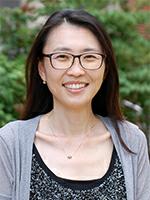Confronting the Asian Model Minority Stereotype in STEM: Unheard Stories of Asian Students in American Schools
| Event Date: | March 2, 2017 |
|---|---|
| Speaker: | Minjung Ryu |
| Speaker Affiliation: | Assistant Professor of Chemical Education, Purdue University |
| Type: | Research Seminar |
| Time: | 3:30 - 4:20 PM |
| Location: | Arms B071 |
| Priority: | No |
| School or Program: | Engineering Education |
| College Calendar: | Show |
In this seminar, Dr. Ryu will present her previous and current research that investigates Asian students’ lived experiences in STEM learning settings and engages Asian students in the doing and talking of science. Implications for research and teaching practices will be discussed in light of the recent changes in STEM education contexts, student demographics in K-16 education, and the political climate in the United States.
Bio | Dr. Ryu started her career as a chemist in industry. While studying chemistry in schools and working as a chemist, she had been curious about why chemistry, and science in general, is so hard to some people, how people learn chemistry, and what it means to learn chemistry. She transitioned to education to pursue those questions and received her Ph.D. in science education. At Purdue, she teaches chemistry and science teaching methods for students who want to become a teacher. In her research, Dr. Ryu seeks to understand issues around diversity, equity, language, and participation in formal and informal science learning settings. She hopes to find ways to design more equitable science learning environments in order to make science accessible to everyone and empower all learners.

